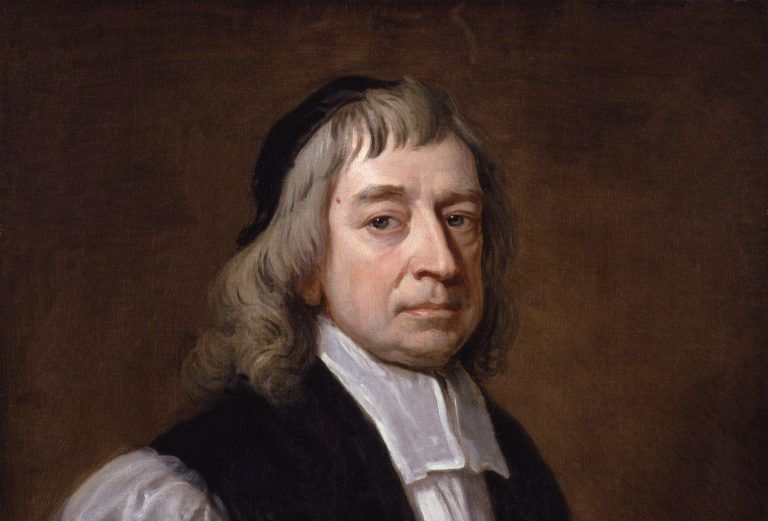
by Jamie Atwell, garden volunteer
In response to Fulham Palace community archaeologist Alexis Haslam’s recent blog about whether Bishop Compton was a good Bishop, Jamie Atwell, garden volunteer at Fulham Palace has written in defence of Bishop Compton…
Background
Henry Compton was born in 1632, a period in European history which was undoubtedly one of the most catastrophic ever known. The Thirty Years War (initially a war of religion, which quickly became a geopolitical conflict) did not finally end until 1648. During the course of the war, it is believed that there were some eight million fatalities on the European continent (a figure only exceeded by the carnage of the Second World War). Here in England, 1645 was the year when an Archbishop of Canterbury, Thomas Laud, was beheaded. By then, the English Civil War had already started and would continue until 1651 (incidentally, it is believed that, proportionately, more combatants were killed during the Civil War than serving British forces in World War 1). Henry Compton’s father, the second Earl of Northampton died during the Civil War fighting on the Royalist side when Henry was only 11 years old. In 1685, Louis XIV of France revoked the Edict of Nantes (a “fundamental and irrevocable law” granting freedom of worship to French Protestants) resulting in the emigration of many Huguenots, a large proportion of whom came to London. A group whom Compton went out his way to support, financially, spiritually and socially.
This depressingly grim preamble does, I hope, go to show, that politics, religion and nationhood were inextricably entwined. To be a member of one particular religious creed inevitably coloured the way one was regarded and treated.
This was Bishop Compton’s world.
To describe Compton as a stalwart of the Church of England would be an underemphasis. Throughout his career he was an ardent and active promoter of Protestantism. He spent a great deal of time trying to include Protestant dissenters in the mainstream church. He was also a key player, in his capacity as Commissioner for Trade and Plantations (i.e. the North American colonies), in establishing the Protestant faith in North America.
Anti-Catholicism
The corollary is his anti-Catholicism, particularly his opposition (partly political it must be assumed) to the Catholic James, Duke of York subsequently King James II. In his capacity as Dean of The Chapels Royal, Compton was responsible for tutoring James’s two daughters – the princesses Mary and Anne in religion. Both would subsequently be Queens of England – the latter was recently portrayed by Olivia Coleman in The Favourite. In both students he instilled a love of the Church of England – and also horticulture. In 1686, Compton was suspended for refusing to admonish one of his clergy for preaching against Catholicism. Reinstated two years later he “received with sullenness the reparation offered”. When James tried to kidnap his daughter Anne and take her to France, it was Bishop Compton (along with his head gardener George London and Sarah, Duchess of Marlborough, another pre-eminent gardener) who came to the rescue. For his part in this matter, George London was rewarded with the wholly disparate appointments of Deputy Superintendent of the Royal Gardens and Page of the Backstairs to Queen Mary.
Treason
Henry Compton was also guilty of treason. He was one of the “Immortal Seven” who wrote to William III, Prince of Orange (husband of his former pupil Princess Mary) asking him to come to England to assume the throne in the place of James II. In other words, here is a cleric who was deeply involved in the most important political events of the day rather than confining himself to purely theological matters. Whether subsequent anti-Catholic legislation in the 18th century can be attributed to Compton is doubtful, though he certainly wouldn’t have opposed it.
But enough of politics and religion. The second half of the 17th century saw an explosion of interest in the natural sciences and, despite his other commitments, Bishop Compton was one of the leading figures, particularly in the fields of botany and horticulture. His achievements in this area are too well known to be rehearsed here. Suffice it to say that a fellow gardener records that “he was one of the best characters that history affords, and when he died left few assets except his plants and his library”.
Henry Compton’s grave is to be found at the eastern end of All Saints Churchyard, Fulham. I would not presume to give him a score in his capacity as Bishop. Instead, I think it would be appropriate to plant there some specimens of Comptonia peregrina (the sweet fern) which was introduced into England the year after his death and is named in his honour.